Menu
Physics Lesson 11.7.1 - What is Diffraction?
Please provide a rating, it takes seconds and helps us to keep this resource free for all to use
Welcome to our Physics lesson on What is Diffraction?, this is the first lesson of our suite of physics lessons covering the topic of Diffraction of Waves, you can find links to the other lessons within this tutorial and access additional physics learning resources below this lesson.
What is Diffraction?
By definition, diffraction is the process by which a wave is spread out as a result of passing through a narrow aperture or across an edge, typically accompanied by interference between the waveforms produced.
The condition to obtain diffraction is that the dimensions of aperture or of the obstacle must be comparable to wavelength. When the aperture is much larger than the wavelength, no diffraction occurs and when the aperture is smaller than wavelength, circular wavefronts are produced. To understand diffraction, you can use the analogy of entering through a narrow gate, in which you must change your position, i.e. turn by 900 to pass through the gate. But if the gate is wide, you pass through it without problem.
Look at the figure below in which diffraction of water waves in a ripple tank is shown.
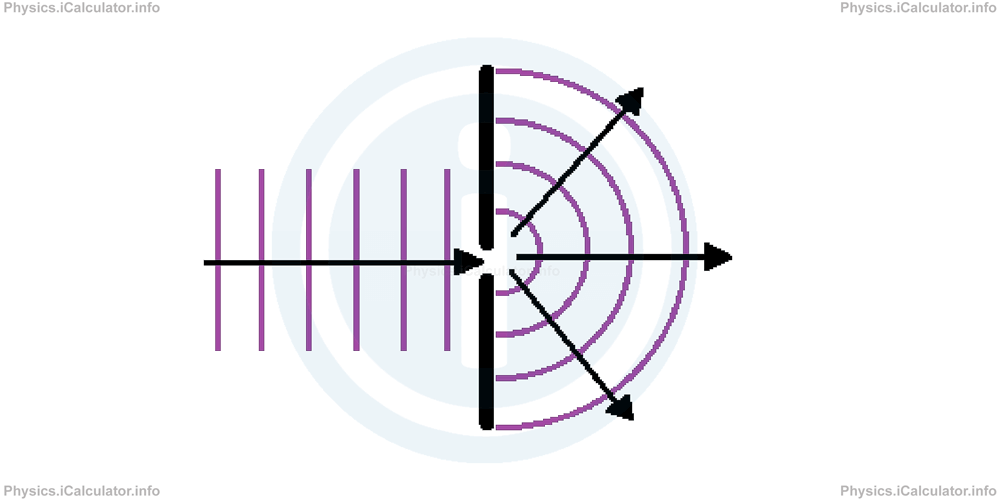
Initially, the wave in the figure was moving in one direction. After entering the narrow aperture, it spreads in all directions as the aperture here acts as a new wave source. As a result, the wave shape changes from straight to round.
If the aperture enlarges, waves straighten because they experience diffraction only at the edges of aperture, as shown in the figure below.

The same phenomenon occurs when a wave encounters a small obstacle as well. Look at the figure.
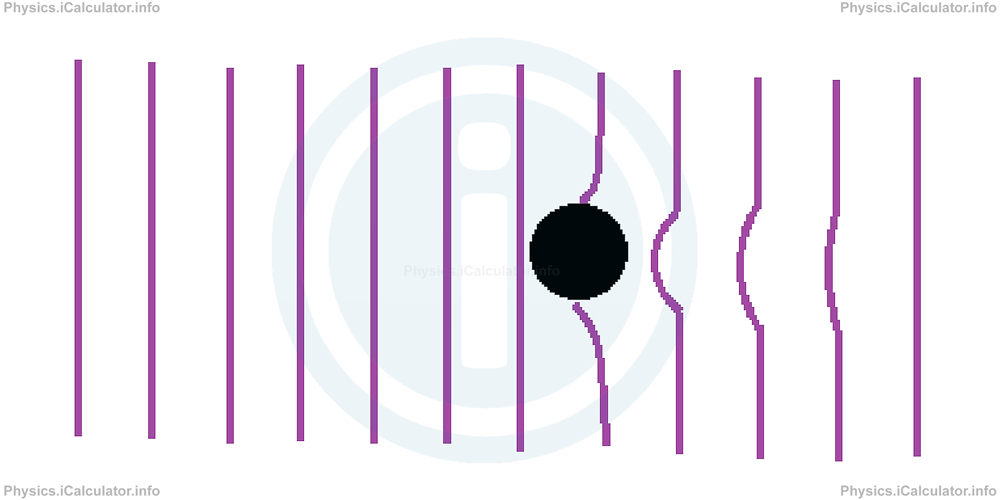
For example, diffraction of sound waves enables us to hear even when the speaker is round a corner of a building. This is because sound waves produced by the speaker bend around small obstacles such as the building walls.
Diffraction of sound waves is commonly observed in everyday life. For example, many forest-dwelling birds take advantage of the diffractive ability of long-wavelength sound waves. Owls for instance are able to communicate across long distances due to the fact that their long-wavelength hoots are able to diffract around forest trees and carry farther than the short-wavelength tweets of songbirds.
The following two actions helps us understand the operation mode of diffraction.
1) When you hit a poplar trunk using a thin stick, the stick will bend around the trunk.
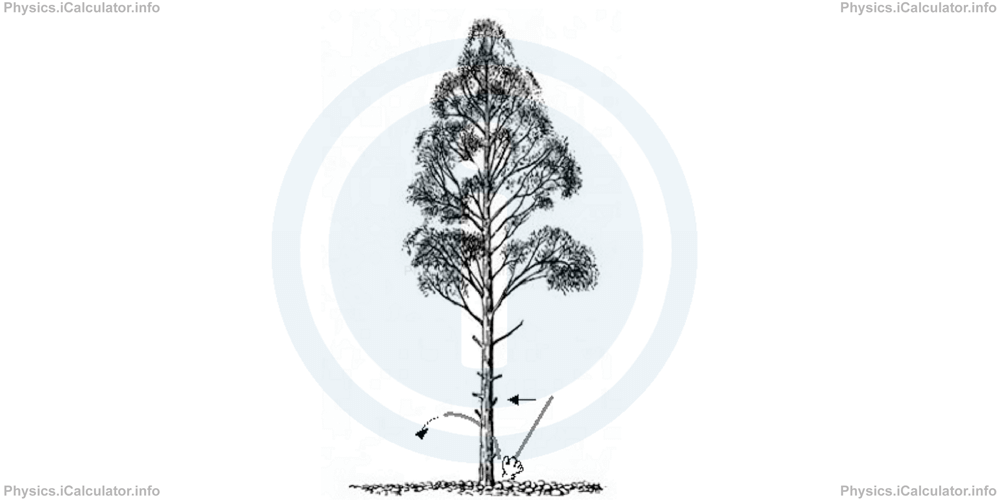
2) When you put your finger under the tap, water first passes around your finger and then, it falls on the sink.
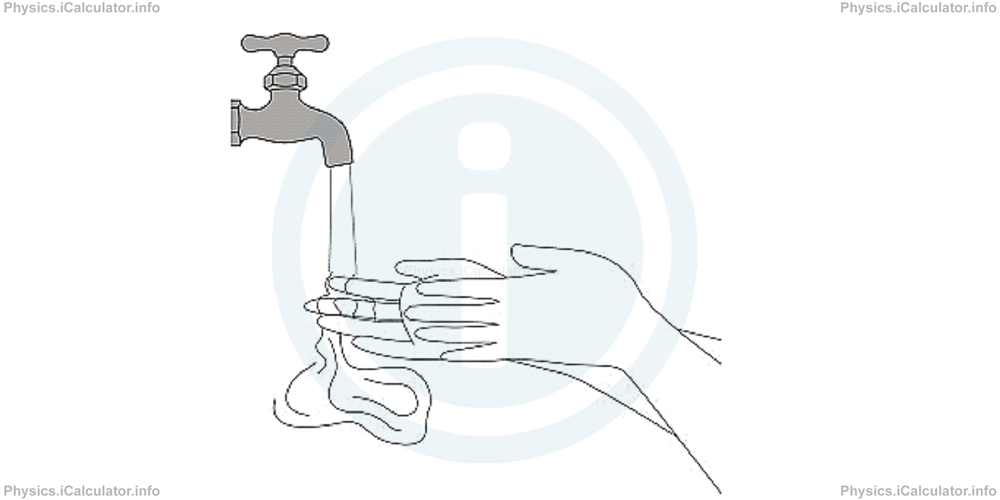
When a simultaneous diffraction occurs through two openings, an interference pattern is produced.
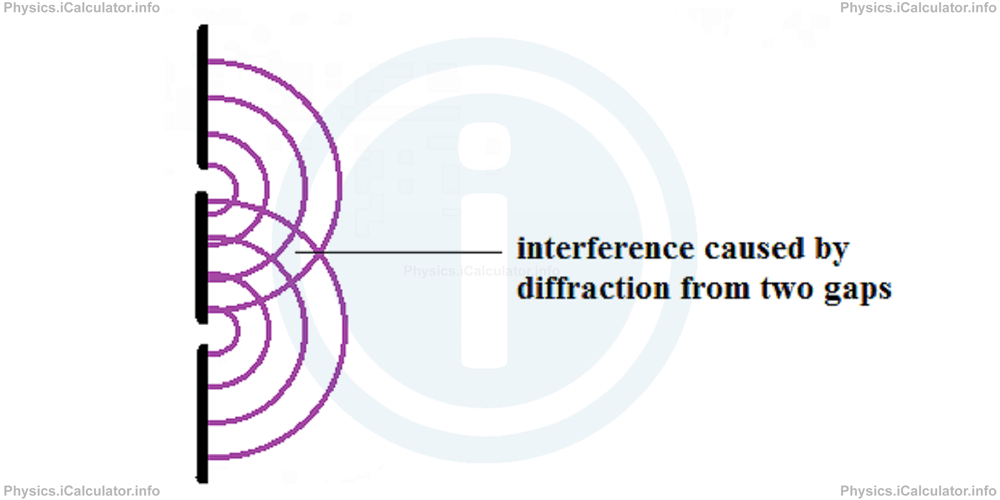
Therefore, diffraction and interference are related concepts as interference is produced when diffraction from two or more openings does occur. In this way, we can say "diffraction from two or more sources produce interference but interference cannot produce diffraction." Therefore, the relationship between diffraction and interference is unilateral.
The amount of diffraction (the sharpness of the bending) increases with increasing wavelength and decreases with decreasing wavelength for a constant opening. In fact, when the wavelength of the mechanical wave is smaller than the obstacle, no noticeable diffraction occurs.
Diffraction of water waves is observed in a harbor as waves bend around small boats and are found to disturb the water behind them. The same waves however are unable to diffract around larger boats since their wavelength is smaller than the boat.
Example 1
A number of straight and parallel water waves are shown in the figure below.
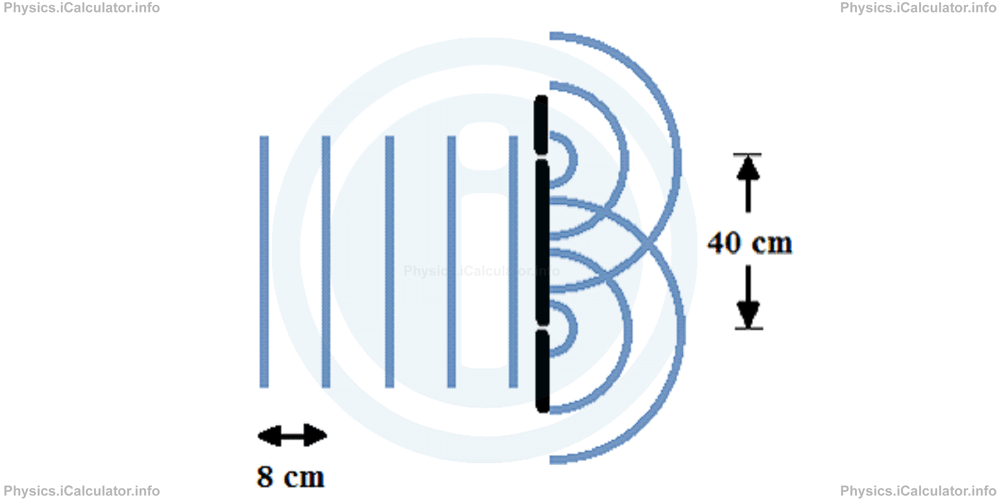
The distance between every two crests is 8 cm. After passing through two small gaps that are 40 cm away from each other, water diffracts and circular wavefronts are produced.
Calculate the time needed for the interference to produce if waves move at 2 cm/s.
Solution 2
Waves move towards each other in the lateral part of the two gaps. Therefore, their relative speed is 2 cm/s + 2 cm/s = 4 m/s. Thus, it takes 40 cm / 4 m/s = 10 s for the interference to produce.
You have reached the end of Physics lesson 11.7.1 What is Diffraction?. There are 2 lessons in this physics tutorial covering Diffraction of Waves, you can access all the lessons from this tutorial below.
More Diffraction of Waves Lessons and Learning Resources
Whats next?
Enjoy the "What is Diffraction?" physics lesson? People who liked the "Diffraction of Waves lesson found the following resources useful:
- Definition Feedback. Helps other - Leave a rating for this definition (see below)
- Waves Physics tutorial: Diffraction of Waves. Read the Diffraction of Waves physics tutorial and build your physics knowledge of Waves
- Waves Revision Notes: Diffraction of Waves. Print the notes so you can revise the key points covered in the physics tutorial for Diffraction of Waves
- Waves Practice Questions: Diffraction of Waves. Test and improve your knowledge of Diffraction of Waves with example questins and answers
- Check your calculations for Waves questions with our excellent Waves calculators which contain full equations and calculations clearly displayed line by line. See the Waves Calculators by iCalculator™ below.
- Continuing learning waves - read our next physics tutorial: Types of Waves. The Simplified Equation of Waves
Help others Learning Physics just like you
Please provide a rating, it takes seconds and helps us to keep this resource free for all to use
We hope you found this Physics lesson "Diffraction of Waves" useful. If you did it would be great if you could spare the time to rate this physics lesson (simply click on the number of stars that match your assessment of this physics learning aide) and/or share on social media, this helps us identify popular tutorials and calculators and expand our free learning resources to support our users around the world have free access to expand their knowledge of physics and other disciplines.